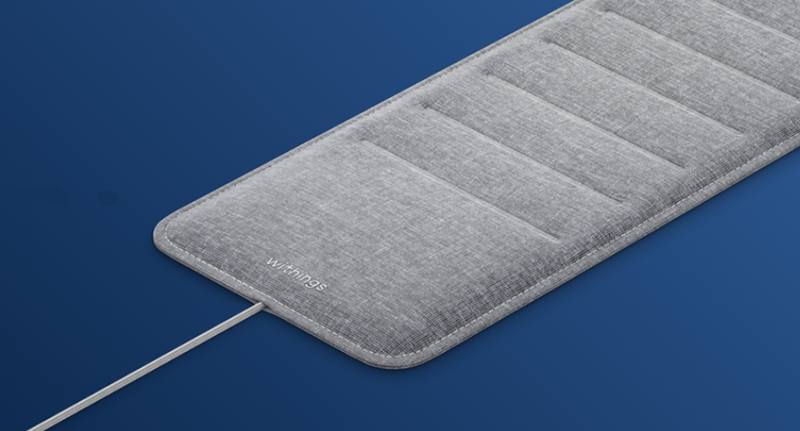Withings has just updated its sleep sensor mat to include new capabilities that monitor breathing problems all night long and could ultimately warn the user of sleep apnea.
Withings Sleep, formerly known as Nokia Sleep, mainly monitors sleep cycles, heart rate and snoring, and display the results and suggestions to the users via companion Health Mate app, reports MobiHealthNews. Each disturbance is then rated high to low, and it tells you whether or not you should seek medical help.
Related Alphabet’s Verily Partners Up With ResMed to Study Sleep Apnea
Sleep apnea is a serious sleep disorder that happens when your breathing is interrupted during sleep. Untreated sleep apnea can pose serious danger to health. People with untreated sleep apnea experience repeated breathing stoppage during their sleep, which may sometimes amount to hundreds of times. This means the brain – and the rest of the body – may not get enough oxygen.

According to the National Sleep Foundation, 22 million Americans suffer from sleep apnea and among them 4 out of 5 aren’t aware they have the condition and often think of it as a snoring problem. The condition not only cause drowsiness and fatigue, it can also complicate a person’s diabetes, heart health, weight and mental health.
“Despite its prevalence and serious consequences, sleep apnea goes largely undetected as current tests are confined to the clinical and sleep lab environment,” said Eric Carreel, president of Withings. “By allowing people to track the intensity of breathing disturbances, we are helping them identify warning signs early. This announcement is very important as it furthers our mission to bring medical grade analytics into the home and is the first step towards the medical certification of sleep apnea detection which we aim for by the end of this year.”
Related GO2SLEEP Wearable Smart Ring Detects Sleep Apnea and More
The Withings Sleep is a pad that slips under your mattress removing the need for you to wear a sleep tracker on your wrist.
The French consumer electronics company rolled out the new features globally on March 12.












